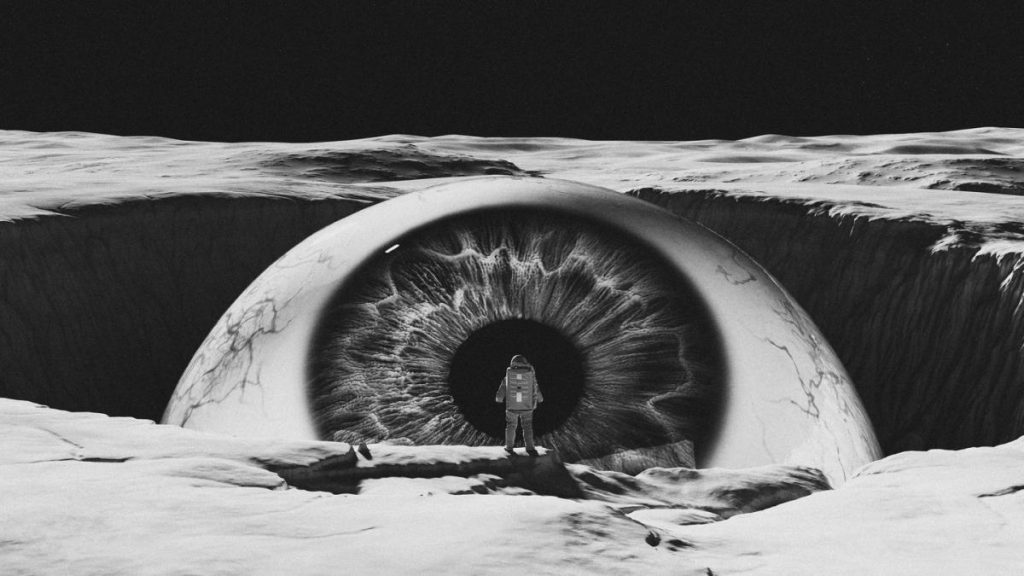-
Discovered in 2017, exoplanet LHS 1140 b, located about 48 light-years from Earth, was initially thought to be a mini-Neptune, but a new study suggests it may actually be a rocky super-Earth with some pretty interesting terrain.
-
The cryosphere planet is tidally locked around a low-mass red dwarf star, and may have a watery “pupil” up to 2,500 miles wide, giving the exoplanet the overall appearance of an eye without an eyelid.
-
Despite its unsettling appearance, LHS 1140 b is now a strong candidate for finding liquid water outside our solar system.
There are many strange exoplanets in the universe. TOI-1798cFor example, WASP-130b, which spends a year in less than half an Earth day, is distorted. Rugby ball shapeand a collection of exoplanets called “superpuffs” Cotton candy density. Now, a new oddity has been added to this collection of space oddities. Eyeball Super Earth.
LHS 1140 b orbits a low-density M-type main-sequence star, also known as a red dwarf, that is roughly one-fifth the mass of the Sun. SunDiscovered in 2017 about 48 light-years from Earth, astronomers initially speculated that this exoplanet was a mini-Neptune, a small size with Neptune-like characteristics (a gas giant with a thick, hydrogen-rich atmosphere). But after analysing new data from the James Webb Space Telescope (JWST) and supporting data from Spitzer, Hubble, and TESS, astronomers from the University of Montreal (UdeM) now argue that the planet is actually a rocky super-Earth with a mass 5.6 times that of Earth.
But the most astonishing feature of LHS 1140 b is that its surface may contain a 2,500-mile-wide “pupil” of molten water, shaped by its tidally locked position. This means that every 24 days, an unblinking eye 1.7 times the size of our Sun appears to peer into the orbit of the Sun. EarthThe results of this study are: Preprint Server arXivand this paper, Astrophysical Journal.
LHS 1140 b has an orbital radius of just According to NASA, that’s about 9 percent of the distance from Earth to the Sun.If our Sun, a G-type main sequence star, were to be replaced by LHS 1140, the planet’s surface would undoubtedly scorch. But because this star is cooler and less massive, Red dwarfthis eye-catching planet sits firmly within the “Goldilocks Zone.” Just right Despite the exoplanet’s strange appearance, there’s another important reason why astronomers are intrigued by this eye-catching super-Earth: It could be that liquid water exists.
“Of the temperate exoplanets currently known, LHS 1140 b may be the best candidate for indirect confirmation in the future. Liquid Water “On the surface of an alien planet outside our solar system,” says Charles Cadieux, a doctoral student at UdeM and co-author of the study. said in a press statement.“This will be a major milestone in the search for potentially habitable exoplanets.”
To achieve this major milestone, the team received invaluable support fromDirectors’ discretionary time“(DDT) J.W.S.T.This comes at a time when critical observations are needed — in this case, the double pass of LHS 1140 b in December 2023. The team will use the telescope’s Near-Infrared Imaging and Slitless Spectrograph (NIRISS) instrument ( Designed for exoplanet detection and transit spectroscopyetc.), refuting the mini-Neptune theory, and also finding evidence of a nitrogen-rich atmosphere, which may mean that LHS 1140 b has a secondary atmosphere, which typically forms after a planet loses its thick primary atmosphere.
The study also found that 10-20% of the exoplanet’s mass comes from water, meaning it’s likely a snowball planet – the only exception being the aforementioned water pupil where the exoplanet always faces the sun. StarThe environment in the center of that watery ocean could be very comfortable, with the authors estimating temperatures could be around 20°C.
These observations are currently preliminary – further observations of the star system are needed to determine the exact details – but JWST’s observations of LHS 1140 b are a rare but powerful example of how telescopes can help us better understand many worlds far beyond our universe. Solar System.
“Earth-like atmosphere “Observations on temperate planets are pushing the limits of Webb’s capabilities. It’s doable, we just need more time,” René Doyon, the paper’s supervisor and principal investigator of the NIRISS instrument, said in a press statement. “Current indications of a nitrogen-rich atmosphere need to be confirmed by more data. We need at least another year of observations to confirm that LHS 1140 b has an atmosphere, and probably another two to three to detect carbon dioxide.”
Unfortunately, it won’t be easy for the JWST to analyze this system, since it can only visit it eight times each year, but future observations of LHS 1140 b will undoubtedly bring some truly spectacular discoveries. discovery.
You might also like


